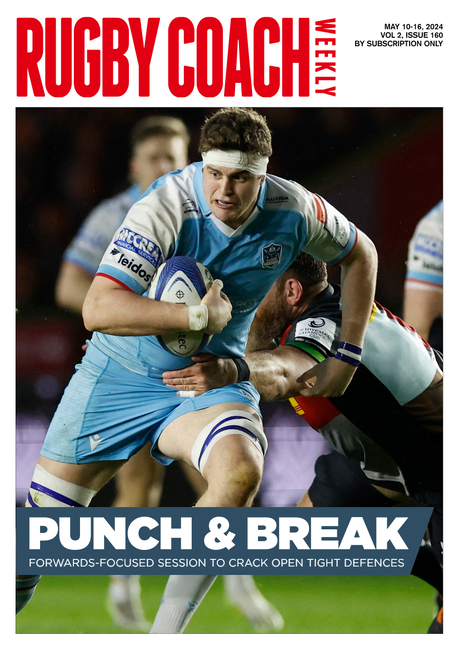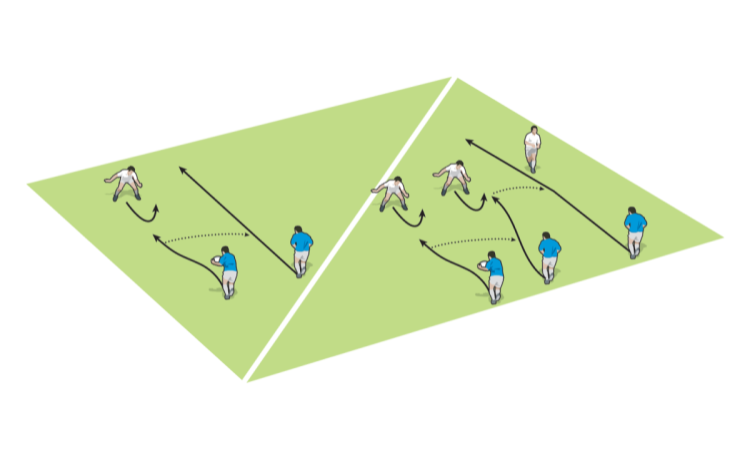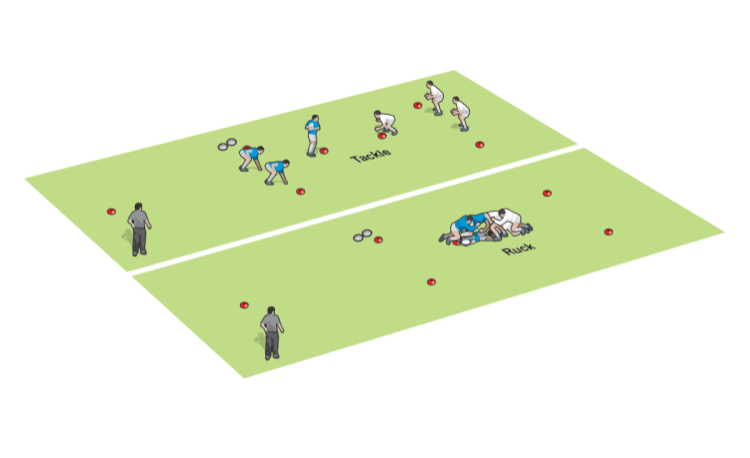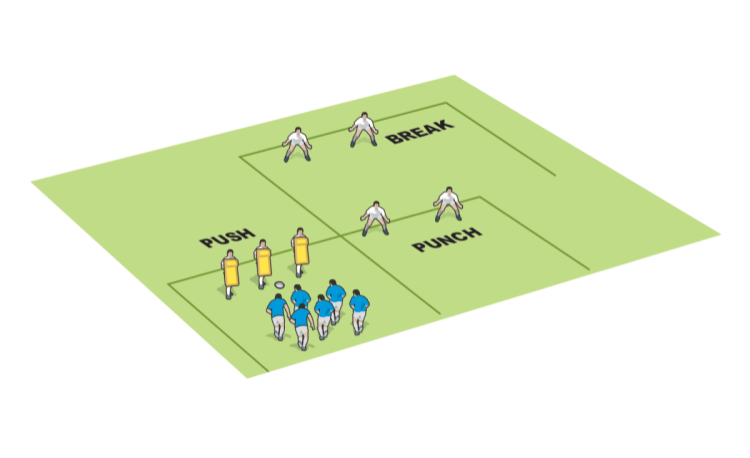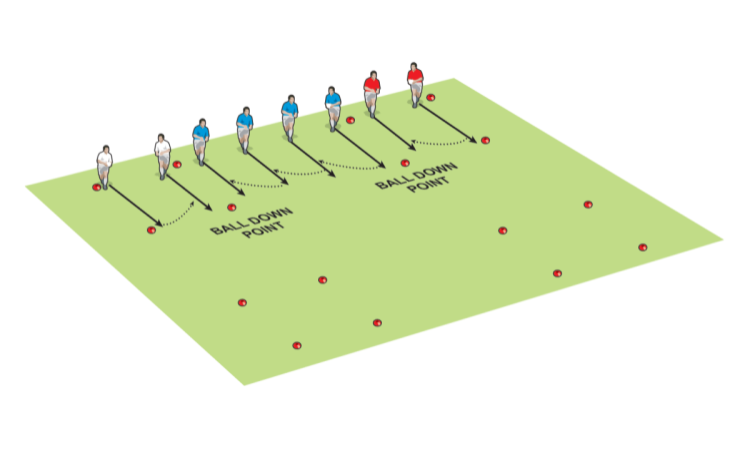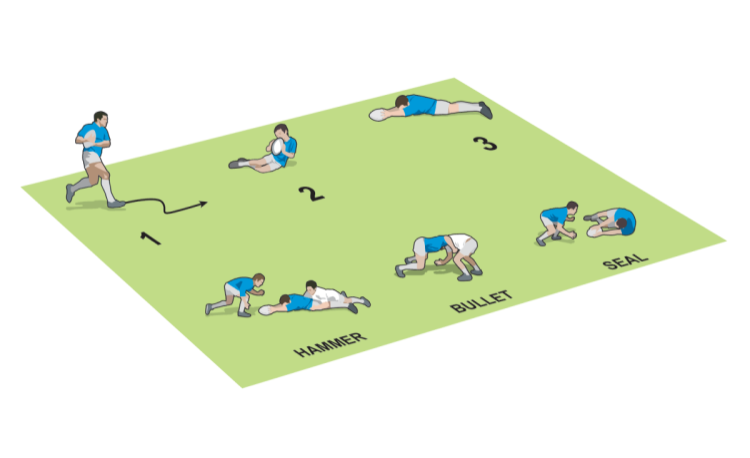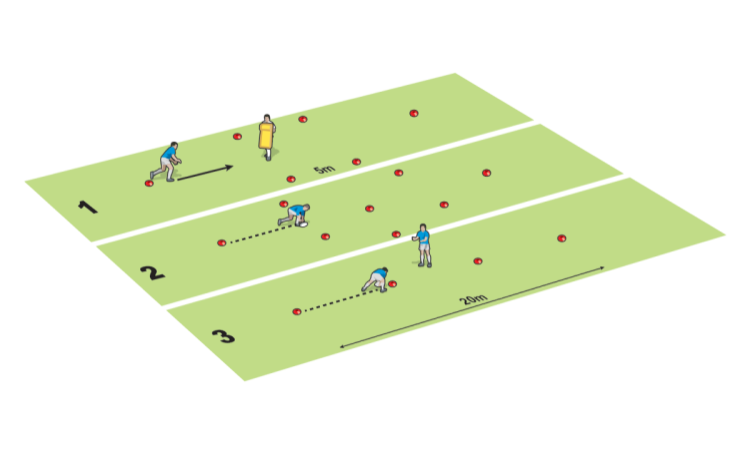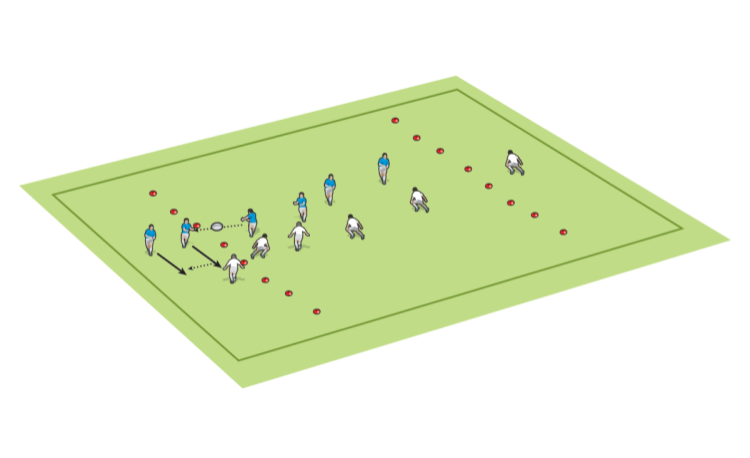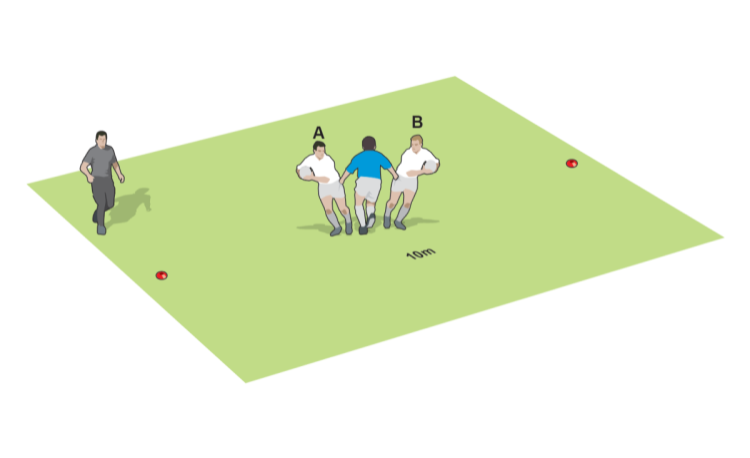You are viewing
1 of your 2 free articles
Weak defender back attack
Practise your backs moves in a more realistic environment. Identify weak defenders with constraints that will make your attackers want to play down that channel and exploit mismatches.
CHALLENGE
- Break the line and support the break from a multi-option move
- Attack the weakest defender
- Allow 20 minutes this week. Return to the play every week.
1 WALK THROUGH

- In a confined space, have the players walk through the play. This will give the idea of potential running lines and passing possibilities.
- Have two pad defenders come forward to help players picture lines.
- Work from both sides, and highlight possible difficulties, like the length of pass or who runs when.
- The confined space allows lots of attempts.
2 REAL DEFENCE

- In a larger area, put three defenders at the front, one covering from the back.
- Run the play at full pace.
- If there’s a clean break, the attack has to beat the last defender.
- If touched, you can immediately offload.
- Add in “grab tackles” to make defence and attack work harder.
3 WEAK DEFENDER

Give the front three defenders a letter each.
Option 1:
Tell all the attackers who the weak defender is. There is no need to offload unless the weak defender makes a shoulder contact.
Option 2
Tell just one attacker who the weak defender is.
Option 3
Nominate a weak shoulder. All defenders are only allow to “touch tackle” with that shoulder.
Option 4
Nominate a weak shoulder for the weak defender. Tell the attackers or play enough times for the attackers to work it out.
Related Files
Newsletter Sign Up
Coaches Testimonials

Gerald Kearney, Downtown Las Vegas Soccer Club

Paul Butler, Florida, USA

Rick Shields, Springboro, USA

Tony Green, Pierrefonds Titans, Quebec, Canada
Subscribe Today
Be a more effective, more successful rugby coach
In a recent survey 89% of subscribers said Rugby Coach Weekly makes them more confident, 91% said Rugby Coach Weekly makes them a more effective coach and 93% said Rugby Coach Weekly makes them more inspired.
Get Weekly Inspiration
All the latest techniques and approaches
Rugby Coach Weekly offers proven and easy to use rugby drills, coaching sessions, practice plans, small-sided games, warm-ups, training tips and advice.
We've been at the cutting edge of rugby coaching since we launched in 2005, creating resources for the grassroots youth coach, following best practice from around the world and insights from the professional game.


